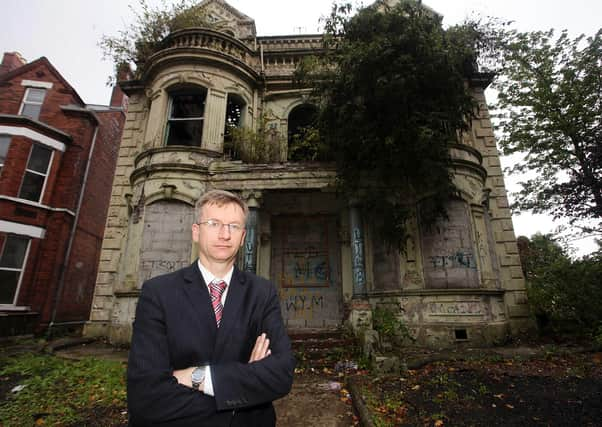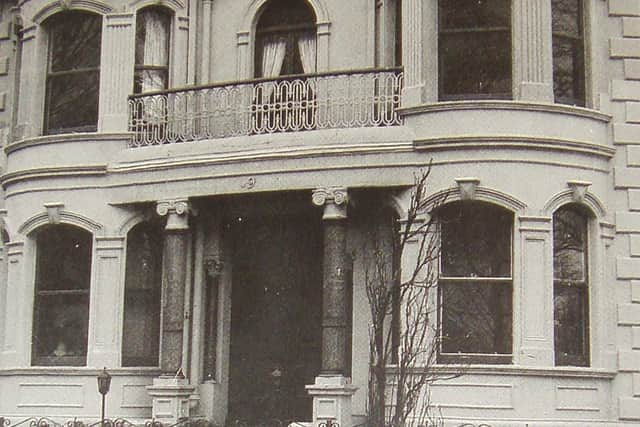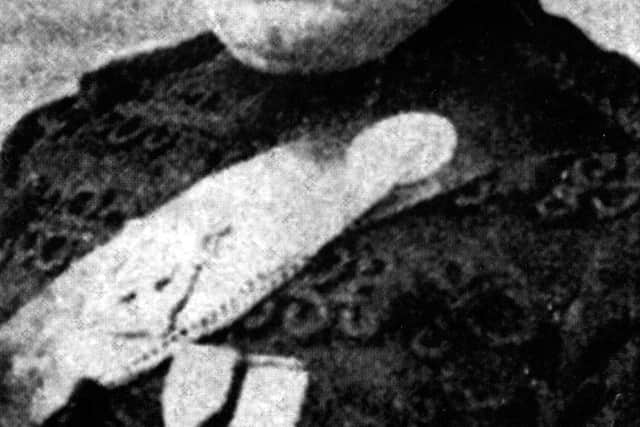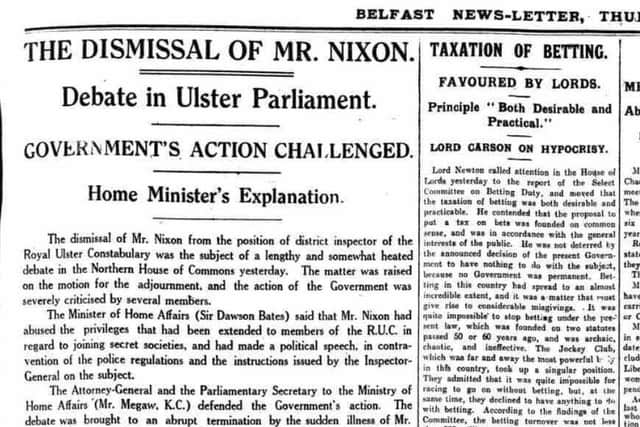Bulldozers move in on Belfast home of controversial unionist (September 2010)


Shankill residents had described the demise of the stately home on the Ballgomartin Road as “sad” but others had welcomed the plan to pull the house down.
Developers had applied for planning permission to construct a new 61-bed residential nursing home.
Advertisement
Advertisement
Co Cavan-born John William Nixon – better known as DI Nixon – was one of the officers in charge of the ‘A’ Specials from 1920-22 in Belfast and went on to join the RUC when it was formed in 1922.


But he was dismissed in February 1924 by Northern Ireland Prime Minister Sir James Craig following a political speech to the Sir Robert Peel Lodge at Clifton Street Orange Hall in Belfast, during which he said that “not an inch of Ulster should be yielded” to the Free State.
Nixon went into politics and was elected as an independent unionist MP for the Woodvale constituency, a position he held until his death in 1949.
Many leading politicians in Northern Ireland, as well as Orange leaders, attended his funeral, and tributes were paid to his loyalty and his dedication to the Orange cause.
Advertisement
Advertisement
However, DI Nixon was linked by some to the infamous McMahon killings in 1922 when six Catholics were shot dead and two injured by members of the Ulster Special Constabulary (USC) or Royal Irish Constabulary (RIC). No one was ever prosecuted for the murders and at one time Nixon took a libel case, which he won, against a newspaper and a book publisher which had accused him of a role in the murders.


Nixon was remembered through the Nixon Memorial Lodge who had a banner depicting a picture of him. The lodge folded in the late 1980s but the banner survived and was on public display in August 2010 – for the first time since 1968 – in a retired banner parade.
His home, known as Woodvale House, was then one of the grandest homes in the area.
During the Second World War it was used as a base for air raid wardens but by 2010 it had been allowed to fall into decline – and Belfast independent councillor Frank McCoubrey had said that it was a hazard.
Advertisement
Advertisement
Mr McCoubrey said that, ideally, he would have liked to have seen the building preserved but said it was being used by youngsters engaged in anti-social behaviour.


“The house has fallen into terrible disrepair, it just didn’t seem there was anyone prepared to take the initiative and make the place good again,” he said.
“I had been fearing that a child was going to end up getting hurt in it as it has been used for anti-social behaviour.”
However, Shankill resident Jake Kane told the News Letter that people in the area were upset about the house being bulldozed.
Advertisement
Advertisement
And DUP councillor Brian Kingston also expressed disappointment.
“This grand dwelling was a unique feature of the locality – its deterioration and pending demolition is a great loss to built heritage of the area,” he said.
Mr Kingston suggested including an image of Woodvale House within the new premises.
But historian Joe Baker, who wrote a book about DI Nixon, said there was “nothing special” about the house.
Advertisement
Advertisement
“I think the best thing is to pull it down – there are those who want it kept as a shrine,” he said.
“It has no historical significance other than DI Nixon lived there.”
A staunch Loyalist but critic of government
On May 12, 1949 the News Letter published the following obituary of DI Nixon.
It read: “Mr J W Nixon, whoso death occurred at his home Ballygomartin Road, Belfast, yesterday morning, was Independent Unionist MP for the Woodvale division the City for 20 years.
Advertisement
Advertisement
“His death causes the first by-election in the new Parliament. Mr Nixon’s only appearance in the House this session was at the State Opening, when he seconded the re-election Sir Norman Stronge as Speaker.
One of the most outspoken members, he was trenchant critic of the government on many occasions, but on the issues of Northern Ireland’s place in the British Commonwealth he was at one with the official Unionist Party, and the Nationalists beside whom he sat on the Opposition side, were frequently the targets his broadsides.
“He first entered Parliament in 1926, and he successfully held the seat at three elections against official Unionist candidates. February last, when the Constitutional question was the main issue, he was not opposed.
“Mr Nixon was native of County Cavan, and joined the RIC in 1869. He rose from the ranks to be district inspector. He transferred to the RUC, and was awarded the MBE for his services in the Shankill Road district during ‘the troubles’.
Advertisement
Advertisement
“In 1924, as the result of a speech which he made at Orange meeting he was asked to resign from the Force. Afterwards he became an alderman for the Court Ward on the Belfast City Council, and during his five years’ chairmanship of the Electricity Committee, many important developments and extensions were initiated. He retired in 1935.
“He was a member of the Sir Robert Peel Memorial LOL, the Black Preceptory, the No Surrender Club of the Apprentice Boys, and the Masonic Order. He is survived his wife and son and daughter.
“At Stormont yesterday, the Speaker (Sir Norman Stronge) formally announced the death of Mr Nixon, and on behalf of the House expressed sympathy with the relatives.”